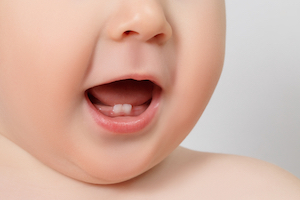
Reading your baby’s teeth – A sign of orthodontic treatment to come?
While it is impossible to say for sure, there are signs that can indicate the likely need for orthodontic treatment in your young child.
Orthodontic treatment is largely about space, or lack thereof.
The most common issue is having too little space; referred to as crowding. Crowding occurs when a person’s jaw does not grow to a size that can accommodate the teeth. If your child has crowding of their baby teeth, there is a good chance that the adult teeth will require orthodontic treatment.
The opposite problem of crowding, too much space between teeth, can also occur. The treatment for this involves closing up the spaces with orthodontic treatment methods.
Another issue that can arise is what Orthodontists refer to as the “skeletal relationship”. If a person has a very prominent upper or lower jaw it is often indicative of orthodontic treatment.
When Orthodontic treatment is required
Treatment rarely commences before the permanent molar teeth erupt, around the age of 6 or 7. More comprehensive orthodontic work is usually delayed until the child reaches the age of 10 – 14.
There are certain factors that can complicate orthodontic treatment, requiring extra work and added expense.
If your child had tooth decay in their baby teeth, this can impact the permanent teeth and subsequent orthodontic work required.
Another problem that can be costly is impaction, which happens when the tooth gets stuck up in the jaw and can’t make its way down.
It these instances, careful monitoring from your child’s dentist is required, to treat issues from the earliest stages and minimise complications.
Taking your child to a paediatric dentist on a regular basis, right from birth, is recommended for optimal oral health and hygiene. It is also the most reliable way of predicting future orthodontic treatment issues that may arise, and dealing with them appropriately before they become a bigger problem.
If your dentist thinks your child is going to require Orthodontic treatment, they will advise you on what steps need to be taken, along with a referral to an Orthodontist for treatment.













